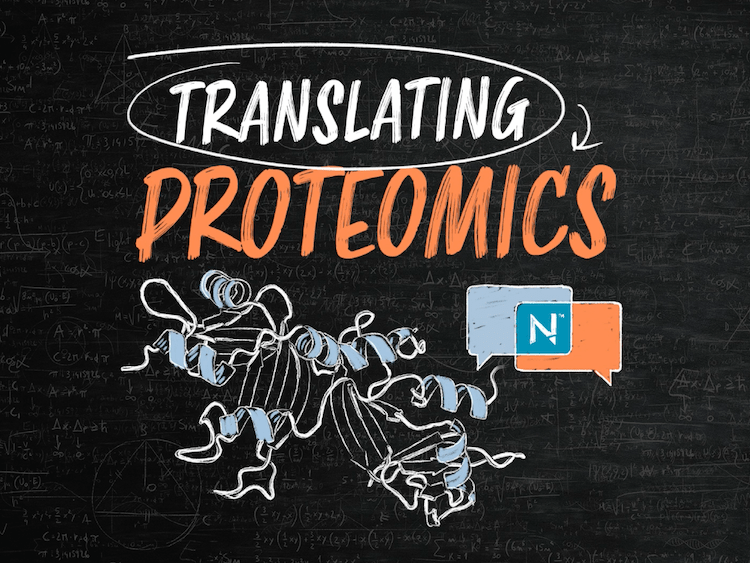
Moving from snapshots to movies to capture the dynamic nature of the proteome
Nautilus Biotechnology
September 10, 2024

Biological systems are anything but static. The living world is in constant flux, from the subcellular level up to the entire organism. Cells change and migrate, pathways turn on and off in response to stimuli, and processes evolve in dynamic relationships with their environment.
That’s certainly true in the proteome, where the mix of proteins a cell produces can vary dramatically at different time points, or if a cell’s environment changes. That means measuring the proteome of anything requires more than just a single glance, analogous to a snapshot. To truly understand the proteome, and biology writ large, we need something more akin to movies — many images at different time points strung together to form a cohesive whole.
In Episode 3 of Translating Proteomics, Nautilus Co-Founder and Chief Scientist Parag Mallick and Senior Director of Scientific Affairs and Alliance Management Andreas Huhmer, discuss the importance of dynamism to both the field of proteomics and life itself. They argue that moving to a dynamic perspective on life powered by proteomics will require a technological leap forward in the tools used to study the proteome.
The limitations of static proteome snapshots
Traditional biological studies often rely on static snapshots — single-time-point data that provide limited insights into the ongoing processes within cells and organisms. While this approach has yielded many results, it’s also led to a simplistic view of biology, Andreas says. That view fails to capture the richness and complexity of biological systems, which are continuously responding to stimuli, changing, and adapting.
It’s similar to predicting the weather, Andreas says. Gathering enough data to know if it’s going to rain next week requires more than just a single data point. In fact, it takes years, even decades of multifaceted data to begin to make weather forecasts. “We have temperature measurements, we have cameras, we have satellites, we have measurements at different layers of the atmosphere. All of them ultimately allow us to predict this thing we call weather,” Andreas says.
It’s the same in biology. Like seasons, biological processes can be cyclical, but they’re rarely the same. So, understanding biology requires integrating data across various time points and perspectives to reveal how biological systems change and react.
“We’re starting to really appreciate the dynamic nature of biological systems as we see how cells migrate, how cells are never really stuck, and how cells morphologically change to adapt,“ Andreas says.
Watch Parag and Andreas discuss how far we’ve come in appreciating the spatial and temporal aspects of the proteome:
Making movies of the proteome
Parag and Andreas liken this new vision of biological research to making movies instead of taking photos. That moving view, pieced together from many different glimpses from many different angles, would offer a better way to understand the dynamic environment of the proteome and other aspects of biology.
“A movie where you only have five frames isn’t much of a movie,” Parag says. “We think about traditional movies being 60 frames per second. If we wanted to describe biology, we need to sample the time landscape sufficiently to capture where the action is happening, and that might involve hundreds, thousands, millions of experiments.”
Watch Parag and Andreas discuss the time scales required for biological movies:
With next-generation technologies that peer into the proteome and offer unprecedented resolution and scale, researchers may get the kind of high-temporal-resolution view needed to understand dynamic biological processes. That would be a significant step forward, but it’s only one part of the solution.
Developing the tools to make proteomic movies
Parag says the other big challenge to developing a dynamic understanding of the proteome and biology in general is simply putting the data together.
“When you get to dynamic systems and changes over time at different length scales, I don’t think we have the computational infrastructure to really ask those questions at scale yet,” he says.
For example, we’ve made significant strides in gathering multiomic data (genomics, transcriptomics, proteomics, etc.), but integrating these datasets into a coherent model remains difficult. Andreas says that lack of an integrated understanding can sometimes be seen clearly on conference posters illustrating data.
Many datasets appear as “this complex hairball of connections between components of the cellular system,” he says. “You look at it and say, ‘well, I know it’s complicated, but I’m not sure what I can learn from this particular hairball.’”
Better computational and modeling tools would turn those hairballs of data into the kind of “movies” that better represent the dynamic processes occurring inside biological systems.
Advances enabling dynamic proteomics
Recent progress in proteomics and biology overall is moving us closer to truly dynamic views of biological processes. That includes the development of biobanks and other open data repositories that allow for worldwide data-sharing.
Other advances just on the horizon may take us all the way there. According to Parag and Andreas, some of the most important advances needed to drive the study of dynamic proteomic processes are:
- Higher sample rates: We need technologies capable of capturing data at sufficient temporal resolution to create meaningful movies of biological processes.
- Advanced analytical tools: It is crucial to develop computational models and analytical frameworks that can handle large, complex datasets. These tools will allow us to integrate data from multiple time points and perspectives, much like weather models combine data from various sources.
- Interoperable models: Collaboration and data sharing are essential. By developing interoperable models, researchers can build on each other’s work. “One lab can develop a model of X, and another lab can build a model of Y, and ultimately, we can click them together and build compound models that explain more and more,” Parag says.
- A focus on learning general principles: Extracting simple principles, rather than focusing on individual components, will create more generalizable insights that can succinctly explain behavior. “Just because the system has many components doesn’t mean it doesn’t follow simpler rules,” Parag says.
Watch Parag and Andreas discuss the tools we might have in the future to help us make biological movies:
The future of proteomics
The future of proteomics lies in embracing the dynamic nature of biological systems. By shifting from static snapshots to dynamic movies, we can gain deeper insights into how biological systems function and how diseases develop and progress. That approach will enable precision medicines tailored to individual patients and a more holistic understanding of biology in general.
Parag thinks we’re in the middle of this transition to a more dynamic view of biology, powered by the ability to collect and interpret far larger datasets. First came collecting and sharing data in one place. Now, “the next evolution of that is workflows and processes, and the next evolution of that is models,” he says. “It’s just natural for us in the scientific community to evolve towards more interoperability, more community, more openness and reproducibility.”
Another key part of this transition is developing tools with enough sensitivity and ease-of-use to begin making true “movies” of the proteome and other biological systems. Next-generation tools like the NautilusTMProteome Analysis Platform are designed to enable single-molecule protein measurements across the dynamic range of the proteome with far more resolution than previous technologies. Next-gen technologies, combined with other ongoing advancements in the world of proteomics, could soon reveal the proteome in all its dynamic complexity.
MORE ARTICLES

